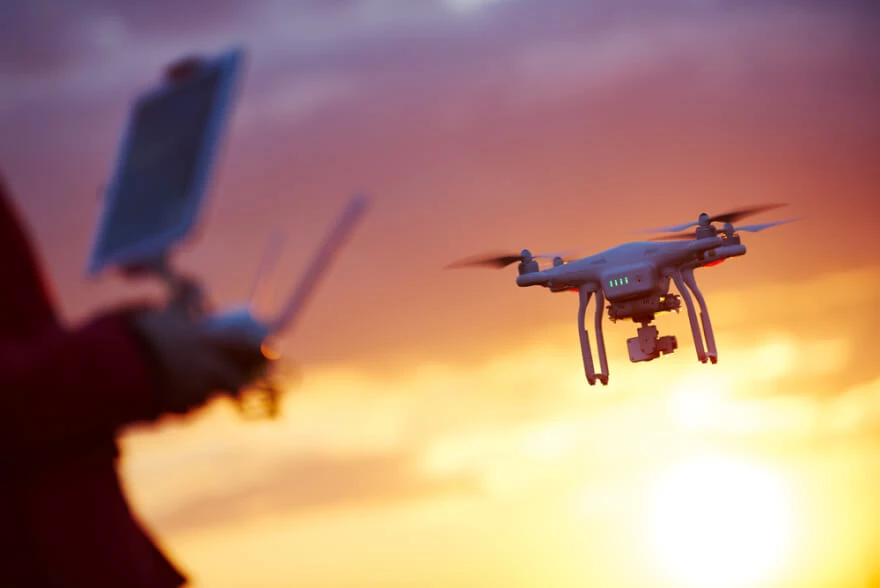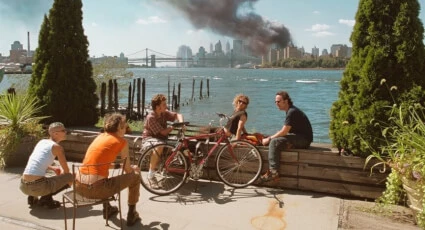Negative space photography

- Introduction to Negative Space
- Techniques for Creating Negative Space
- Examples of Negative Space Photo
- Color and Negative Space
- Experimenting with Shadows and Silhouettes
- Using Negative Space in Portraiture
- Negative Space in Landscape Photography
- Conclusion
With the negative space, a lot of people make the assumption that it is just a photo with a lot of empty space in it. Have you ever heard when they say “Oh, there is too much empty space” or “Why did you put the person so low in the frame”, or “Why they are all the way on the left or the right side of the frame?” And they are not wrong, but the negative space does not mean that this is something bad happening in your image. What this effect ends up having is it draws your eye more toward the main subject in your image. This subject is what we call positive space. So there are negative and positive spaces in photography that allow you to manipulate the viewer’s attention and assert a certain effect of the photo.
Introduction to Negative Space
Negative space in photography is defined as the area surrounding the main subject in a photograph that is left unoccupied. It helps draw the eye to the main subject of the photograph and does not detract the viewer in any way whatsoever. It is not in all photographs and it is a creative choice by the photographer. It can be created by the use of a single color occupying a big area in the photograph, an area out of focus, or something that frames the subject or part of that subject and takes up a big proportion of the photograph but does not detract away from the main subject.
Techniques for Creating Negative Space

- The first step in how to take a negative space photo is to figure out what your subject is because we are kind of working backwards from that point.
- Pay attention to the space that you are in. If you are super up close and personal with your model you are not going to get the full effect of wherever you are, so if you are in a really great hall - showcase the ceiling, or If you are in the interesting vast landscape – step back and show off the landscape.
- Frame forwards or frame back. Framing forward is when your subject is turned to the side for example, if you leave some lead room in the way of his sight – that is framing forward, and if you leave some empty space behind them – that is framing back. So you will notice if you take a photo of this at home, the photo in which you are framing forward you will get that feeling that your subject is a bit more optimistic, more hopeful, inspirational, they are looking towards something. And if you are doing the opposite, by framing back, it sort of gives a somber vibe, more lonely. And that works with similar facial expressions in both photos.
A great way to check if your empty-space photo was successful is to edit it into black and white. That way you will be able to observe if your subject stands out.
Examples of Negative Space Photo
The object of negative space is not to distract the viewer but to help them look at that subject. The easiest way to work out if you have negative space in your photograph is to think about where your eye roams around in the photo if, it is drawn to an area in the photograph this generally will not be negative space. On the other hand, if you feel like your eyes really do not want to go to that part of the photograph, then this could be negative space. And this is not set in stone either, it is really subjective, It could be construed as a sliding scale of negative space.

In this first example, a beach in Taiwan, our eyes follow the lights along the walkway toward where the sun is going to rise. Then they are drawn down to the pebbles on the beach. And they head up to the sky and a few stars that you can see. So, the sky could be seen as a negative space but not that strong, as the few visible stars and the clouds do invite your eyes to mingle around that blue sky.

Then we have this beautiful example of the mountain range that is a little bit stronger to eyes, and they go straight to the peaks and then to the reflection, but because there are a few faint clouds in that sky, the eye does mingle around that sky, so it does detract a little bit from that main subject.
Color and Negative Space
Also, the color of the negative space will have an impact on how strong it is.

This example has a much stronger negative space, as our eyes follow the boats and the coastline with bright buildings on it the most and are away from that black lake’s surface. Because there is nothing in the foreground, our eyes are detracted from even looking at that area of the photograph. This is a true definition of negative space. If you feel like your eyes do not want to go to that part of the image, that is basically what negative space is.
The darker the color and the less texture and detail it has, the more powerful the negative space tends to be. This is not to say that you can not use different colors, but generally, the darker the color, and the less brightness there is in a part of the image, the less likely the viewer is to look at that part of the image.

With this next shot of the drop of water, our eye looks at the ripple on the surface and the drop glancing. But then it does not want to go or need to look at the background as it is completely blacked out. This photo has also a strong area of negative space in that background and we conclude that negative space goes along with minimalist photography for good.
However, even when the color is dark if there are distractions in that negative space or in that darker area, it takes away from its purpose as negative space but does not necessarily make it a bad photo, just different.

For instance, here we see how the drops of water splashed up, some are closer to the camera and some are further away and out of focus, there are lots of different sizes and shapes of blobs and globules of that light being refracted through them. Because of these, our eye wants to explore that dark space and look at all of these different interesting elements in the shot. So we would not consider the dark area in this photograph to be negative space at all.
Experimenting with Shadows and Silhouettes

Silhouetting or framing is another way to create negative space. This could have applications in landscapes or portraiture and all depends on the appropriate framing. Like in this example above you can see how the lighthouse settles in between two negative spaces, one for the surface and another one for the sky. With this particular example we get a sense of the loneliness, the isolation of the subject.

Another example of playing with the shadows and framing, as we can see in this particular image, the photo was taken through the frame of the cracked brick wall which has negative exposure, hence the negative space occurred. There is nothing to see around the crack and it does not take your eye away from the background it just frames and makes you even more concentrated on that small part of the building in front.

Here is another good example of playing with shadows, where you use the sunset and exposure settings to create the negative space around the sea or an ocean and emphasize it as your main subject in the frame. That way we change the background to become more important than what could be seen in the foreground.
When it comes to experimenting with the balancing between the positive and negative space, framing and your lens’s focal length play a big part. So we can play with our composition by moving the subject around to different corners of the frame, zooming in or out as we go.
Using Negative Space in Portraiture

Here we have 5 general tips on how to use negative space in portraiture.
- Avoid shallow depth of field
When you use negative space, the whole idea is to show that negative space, so you want to make sure that the subject is in focus and the background is not so far behind it in focus.
- Negative space composition
You want to make sure that you are paying attention to the balance and the position of your subject in proximity to the background because that is what is going to help create the effect and maximize it with the negative space.

- Avoid distractions in the background
This tip goes along with the previous tip. Avoid distracting items or objects that are in the background. You do not want to have a “giant elephant” in the room that will pay lots of attention to distract from your main subject and reduce the amount of negative space with it.

- Push a certain emotion
If you want to have the emotion of a void or emptiness or loneliness, you will want to have a bunch of space in the background, and maybe your subject is really small in that image, or maybe you are shooting from above to see the entire floor. On the flip side, if you want to show abundance, you want to make sure you are filling the frame with a lot of things, either a lot of actual subject or items around the subject.

- Pay attention to colors
You want to use colors that contrast each other just to further draw the separation between the subject and the background. For instance, if you are doing a black-and-white photo, you want to have your subject wearing black attire with an all-white background. Or if it is an all-black background, use white attire instead.
Negative Space in Landscape Photography
Negative space can significantly improve your landscape photography composition. Typically when going in the field for the landscape shots we expect a good sunrise, however, if you find out that it is overcast and the sky is completely blank, you can still use that to your advantage. These skyes can be used as a negative space, having blank colors in the overcast when the light barely diffuses makes that for a good composition with the negative space. Besides, this could be anything, it could be blank colors in general, the hard surface of a wall, water surface without ripples.

If we intentionally exaggerate the negative parts of the frame, we can start to change the mood or the atmosphere of our images.

Take for example this lighthouse. The way that we frame it can have a dramatic impact on the mood of the scene. If we take a shot up close, there would be just an emphasis on the subject. However, if we step back and go far enough, we give it breathing room and let it settle in the empty space of the blue sky background with a leading line in the face of the road towards it – which is also a part of compositional techniques and is good to combine with the negative space around the subject.

There are other ways to emphasize the negative space too, such as blurring out portions of the frame. This works well if you include out-of-focus objects or surfaces that are close to the camera with the in-focus subject off in the distance.
Conclusion
Negative space leaves room for emotion in a photo to shine through. It is a unique way of framing on composing your shots at the same time that has applications in all types of photography as we mentioned in the examples with the landscapes, portraits, and so on. This allows you to not just fill in the frame with your subject but add elements that will draw more attention to the subject, which will make your photo stand out. That is not necessarily how you should be shooting all the time, negative space composition photography is just a technique that you can use to your advantage but it is a really simple way to differentiate your photos and get creative.
Co-founder of RetouchMe. In addition to business, he is passionate about travel photography and videography. His photos can be viewed on Instagram (over 1 million followers), and his films can be found on his YouTube channel.
Moreover, his profile is featured on the most popular and authoritative resource in the film industry — IMDb. He has received 51 international awards and 18 nominations at film festivals worldwide.

with RetouchMe














